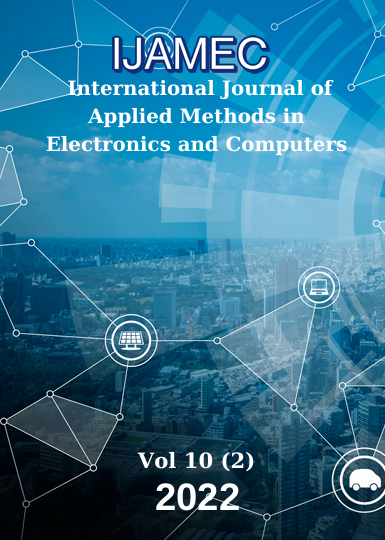A Line Fitting Algorithm: Linear Fitting on Locally Deflection (LFLD)
DOI:
https://doi.org/10.18100/ijamec.1080843Keywords:
Line Fitting, Linear Smoothing, Locally DeflectionAbstract
The main motivation of the study is to prevent and optimize the deviations in linear connections with complex calculations related to the previous and next steps. This purpose is used for more stable detection and therefore segmentation of object edge/corner regions in Quality Control Systems with Image Processing and Artificial Intelligence algorithms produced by authors within Alpplas Industrial Investments Inc. The dataset used in this area was originally obtained as a result of the edge approaches of the plastic panels manufactured by Alpplas Inc., extracted from the images taken from the AlpVision Quality Control Machine patented with this research. The data consists entirely of the pixel values of the edge points. Dispersed numeric data sets have quite changeable values, create high complexity and require the computation of formidable correlation. In this study, dispersed numeric data optimized by fitting to linearity. The LFLD (Linear Fitting on Locally Deflection) algorithm developed to solve the problem of linear fitting. Dispersed numeric data can be regulated and could be rendered linearly which is curved line smoothing, or line fitting by desired tolerance values. The LFLD algorithm organizes the data by creating a regular linear line (fitting) from the complex data according to the desired tolerance values.Downloads
References
Ethem Alpaydın. “Adaptive Com-putation and Machine Learning”. Introduction to Machine Learning, MIT Press, Cambridge, MA, 3 edition, 2014, pp. 79.
Y. W. Chang et al., “Training and testing low-degree polynomial data mappings via linear svm”, J. Mach. Learn. Res., 11, pp. 1471–1490, 2010.
W. S. Cleveland, “Robust locally weighted regression and smooth-ing scatterplots”, Journal of the American Statistical Association, 74(368), pp. 829–836, 1979.
W. S. Cleveland and S. J. Devlin, “Locally weighted regression: An approach to regression analysis by local fitting”, Journal of the American Statistical Association, 83(403), pp. 596–610, 1988.
D. Freedman, “Statistical Models: Theory and Practice”, Cambridge University Press, August 2005.
H. L. Seal, “Studies in the history of probability and statistics. xv: The historical development of the gauss linear model”, Biometrika, 54(1/2), pp. 1–24, 1967.
Caruana, Rich and Virginia R. de Sa. “Benefitting from the Variables that Variable Selection Discards.” J. Mach. Learn. Res., 3, pp. 1245-1264, 2003.
V. N. Vapnik, “Conditions for Consistency of Empirical Risk Minimization Principle”. Statistical Learning Theory, Wiley Interscience Publication, 1998, pp. 82.
Chatfield, Chris, “Non-linear and non-stationary time series analysis”. M.B. Priestley Academic Press, London, 1989, pp. 237.
H. J. Seltman, “Simple Linear Regression”. Experimental Design and Analysis, Carnegie Mellon University, 2013, pp.227.
Y. Dodge, “Simple Linear Regression”. The Concise Encyclopedia of Statistics, Springer New York, 2008, pp.491-497.
D. M. Lane, “Introduction to Linear Regression”. Introduction to Statistics, David Lane Rich University, 2008, pp.462.
K. H. Zou, K. Tuncali, and S. G. Silverman, “Correlation and simple linear regression”, Radiology, 227(3), pp. 617–622, 2003.
N. Altman, M. Krzywinski, “Simple linear regression”, Nat Methods, 12(11), pp. 999-1000, 2015.
I. Sereda et al., “Segmentation by Neural Networks: Errors and Correction”, Computing Research Repository (CoRR), 2018.
W. S. Cleveland and S. J. Devlin, “Locally Weighted Regression: An Approach to Regression Analysis by Local Fitting”, Journal of the American Statistical Association, 83(403), pp. 596-610, 1988.
J. Canny, “A Computational Approach to Edge Detection”, IEEE Transactions on Pattern Analysis andMachine Intelligence, PAMI-8 (6), pp. 679-698, 1986.
Kaggle, Linear Regression: Signal and Noise, USA [Online]. Available:https://www.kaggle.com/competitions/inclass-signal-and-noise/data, Accessed on: May. 23, 2022.
Downloads
Published
Issue
Section
License
Copyright (c) 2022 International Journal of Applied Methods in Electronics and Computers

This work is licensed under a Creative Commons Attribution-ShareAlike 4.0 International License.





